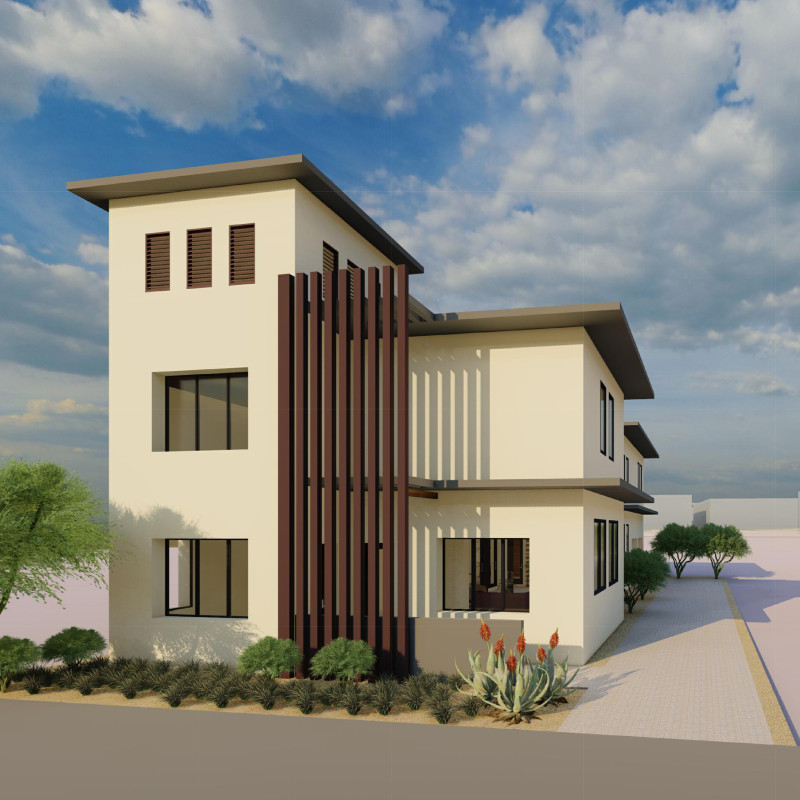5 key facts about this project
At its core, this project serves as a multi-functional space, catering to a variety of activities while maintaining a strong sense of place. The architectural layout is organized to maximize natural light and enhance the interactions within the space. Thoughtfully positioned windows and skylights allow sunlight to penetrate deep into the interior, fostering a warm and inviting atmosphere. This design decision underscores the importance of light as a vital element in shaping user experience, contributing to both aesthetic appeal and psychological comfort.
The materiality of the project is another focal point that deserves attention. A deliberate selection of materials has been made to reinforce the building's relationship with its environment. The use of locally sourced stone, for example, anchors the structure to its site, reflecting the historical context and geological identity of the area. Complementing this, a combination of glass and steel introduces a modern touch, enhancing the façade's transparency while providing visual connections between the interior and exterior. These materials have been combined not just for their physical properties but also for their ability to tell a story about the place and its inhabitants.
Noteworthy is the innovative layout designed to optimize flow and accessibility. The project includes open-plan areas that encourage social interaction, flanked by more intimate spaces that provide privacy when necessary. This design strategy reflects a contemporary understanding of how environments can influence human behavior and interactions. Flexibility is built into the space, allowing it to adapt to different functions, whether it be community gatherings, educational activities, or personal retreats. The interplay of spaces is a testament to the architect's dedication to creating a versatile environment that meets diverse needs.
The landscaping surrounding the building also warrants discussion, as it has been carefully curated to complement the architecture. Native plant species have been selected for their sustainability, minimizing the need for irrigation while enhancing biodiversity. Pathways weave through the landscape, inviting users to explore the outdoor areas, promoting a connection to nature. The integration of green spaces not only improves the aesthetic value but also serves as a crucial aspect of overall well-being, allowing users to engage with the environment both physically and mentally.
One unique aspect of this project lies in its commitment to sustainability. The design incorporates energy-efficient systems, including solar panels that contribute to the building's energy autonomy. Rainwater harvesting and graywater recycling systems emphasize the project's dedication to environmental stewardship, making it an exemplar in sustainable architectural practices. These decisions are not merely technical adaptations; they reflect a broader philosophical commitment to reduce ecological impact, highlighting the role of architecture in promoting a more sustainable future.
In discussing the architectural aesthetics of the project, we observe a harmonious balance between form and function. The clean lines and proportionality of the façade create an understated elegance that is visually appealing without being ostentatious. This careful calibration of design elements embodies the notion that architecture should serve its purpose while simultaneously enriching the experience of those who inhabit it.
Furthermore, the integration of technology within the space enhances the overall user experience. Smart building solutions have been incorporated into the design, facilitating seamless interaction and control over environmental settings, thereby ensuring comfort and efficiency. This forward-thinking approach reflects a broader trend in architectural design, where technology and sustainability converge to create buildings that are not only functional but also responsive to the needs of their users.
Each detail of this project has been considered to build a narrative that reflects the values of the community it serves while fostering an inclusive environment. The architectural design encapsulates a vision for modern living that respects tradition yet embraces innovation, creating spaces that are not only seen but felt.
For those interested in delving deeper into the intricacies of this project, reviewing the architectural plans, sections, and designs is highly encouraged. Each element offers insight into the meticulous thought processes and design strategies that have guided this architectural endeavor. Exploring these components further will provide a richer understanding of how architectural ideas are translated into tangible experiences within this thoughtfully crafted space.


























